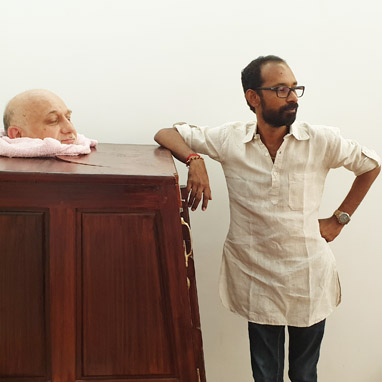Vaidya dharmam : The role of a Physician
- August 21, 2020 /
- by adminuser/
- Fitness › Gurukulam › Health care › Social Realm › Spiritual Science › Wellness

Some lessons that a physician must know about his profession are enunciated by Sage Agasthya, the propounder of Siddha system of treatment, in his ‘Vaidya Guna Vakatam’. A physician deeply aware of the unbreakable bond between the macrocosm and the microcosm should be able to discern the remaining life-span of the patient and the reasons for the illness by the indicators he sees (nimitham, lakshanam) from the surroundings even while approaching the patient, and then by the eight-pronged physical examinations ascertain the intensity of the illness and the extent of malignancy of doshas.
Likewise, even where the death of the patient is almost certain, administering medicines is the bounden duty of a discriminative physician. Rather than the consideration of whether the patient will live or die, the look-out should be to relieve the sufferings. It is from this concern for suffering that this adorable system itself has emerged. One more aspect has to be borne in mind. Even after it has become certain that the patient will die, he may come back to life for unknown reasons. If the patient is forsaken without taking into account these unknown factors, will the physician and the relatives who denied treatment be absolved of the resultant sin? On the other hand, when the condition deteriorates because of his own fault or due to his own karma, if an unscrupulous patient finds fault with the physician, even if he gets some relief temporarily somehow, it is better to remember that such patient would have to carry the sin of the physician’s curse life after life. It is for this reason that eminent physicians sometimes classified some difficult conditions as ‘karmic diseases’, and preferred to stay away from such patients.
A real vaidya should be one having a faultless body (and mind), eminent, who has a high sense of morality, who looks at the patient as a near and dear one, who tries to safeguard all creatures like the pupil of his eye, who understands omens (who can read omens) and other indications, and who is capable of understanding the strength or otherwise of the disease and be able to effect a cure utilising appropriate medicines, mantras and God’s grace. ‘Rationalists’ please don’t get agitated. When I quote the pronouncements in ‘Agasthya guna vakatam’ I am not free to omit certain portions (if it is unpalatable to some people) or add on something on my own. It is considered unethical and an injustice done towards the author of the text. Then the question arises as to how is it that the theories of Bhoganadhar and Pulippani wherein medicines and mantras are mixed, are taught in universities?
The traditional practices of chanting mantras while picking up the herbs, redeeming the curse (shaapam theerkal) etc. are omitted by modern educational traders from the teaching material. Is it a right thing to do? Ayurveda is the upa-Vedam (sub-veda) of Atharva Vedam which is one among the four Vedas. While doing Ayurveda upasana, is it not a war-cry against the ‘sanathana dharma’ to ignore the basic tenets of learning Vedas? Ours is a country where Copy-Right Law is in vogue.
We had a custom of learning the vaidya profession through gurukula system wherein the inner secrets of the sastras generally taught are often hidden in remote texts called ‘keys’, and students had access to these keys only in advanced stages of study. Today, by virtue of the highhandedness of modern laws and modern universities, even the injunctions of the proponents of the system are dumped into wastepaper basket.
A person who provides relief from a disease by use of medicine or otherwise is respectfully thankfully called vaidyan. Today the English language substitutes this with ‘doctor’ – though it is not so such proper because only those who have acquired the degrees of PhD, D.Lit. etc are legally entitled to this title. In the passage of time so many changes have crept in in the learning system. Even the godfathers of various systems of medicines consider it a mark of their learning to engage in mud-slinging against the other systems. They don’t realize that the general public look upon this dirty arrogance with contempt.
He who provides relief from the distress of ailment is a physician, and that which brings about relief is medicine. For a patient it is immaterial whether the relief comes from Allopathy, Homeopathy or some other Pathy.
It is a shameful challenge to the scientific world that in 2020 a virus called Corona, that cannot be seen by the eyes, that melts in soap bubbles, is able to tie down the nose and mouth of all the experts of the world for so long long a time, with no end in view.
Deva Vidya was established in the earlier nineties, as a Traditional Gurukula System, under the eminent leadership of Sri Prem Nath. Prem Nath, hailing from a Siddha family of famous physicians, followed the footsteps of his grandfather, Late Sri Narayanan Vaidyar and started practicing traditional siddha medicine and marma therapies. He uses his large collection of manuscripts for advancing and spreading the Siddhar wisdom to all.


Leave a Reply